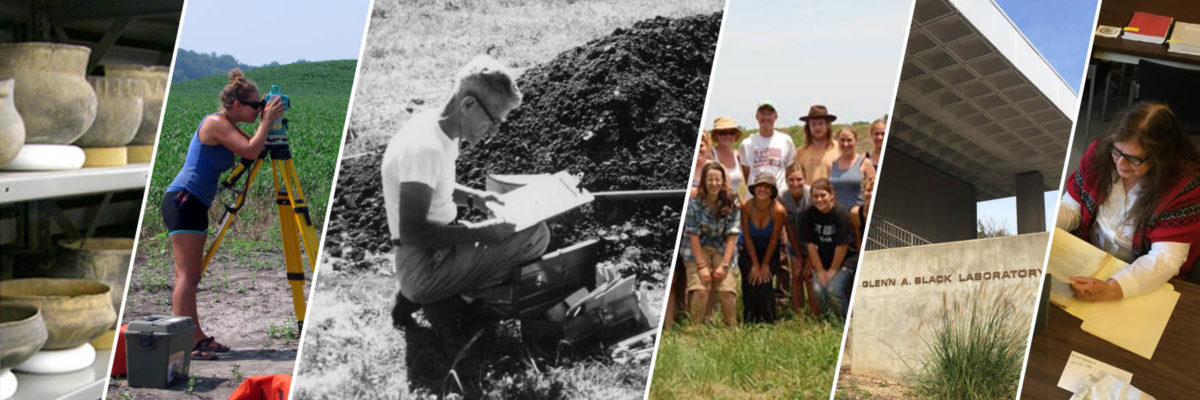by Lauren Schumacher
My name is Lauren Schumacher and I’m a sophomore studying history and archaeology. I participated in the Wylie House field school in summer 2018, and am now working with the Wylie House and the Glenn Black Lab to help process some Wylie collections and develop a mapping system to log artifacts found on the property in the future.
Garden volunteers have been finding artifacts on the property long before the field school excavations took place. Although the most artifacts were recovered during the construction of the Education Center in 2009, bottles, ceramics, buttons, and bones are often found in and around the garden beds. Since these are isolated artifacts found outside of an official archaeological dig, part of my job has been to create a user-friendly digital map and artifact form to allow people to pinpoint where they found an artifact and describe what it is. This is a way to ensure we have information about the artifact from the time it was found and to make future artifact processing more organized. As artifacts begin to be logged, it will be interesting to see the distribution of artifacts on the map and if there are any concentrations of certain artifact types in a particular area.
In addition to the digital map, I’ve been making an artifact identification guide and an animal bone identification guide for the Wylie House. This process has consisted of researching and compiling information about the major categories of artifacts found at the Wylie House: ceramics, bottles, nails, flat glass, buttons, marbles, and bricks. Each of these categories are broken down into more specific types, such as material, decoration, and use. The hope is that this guide will help students and volunteers better identify and describe artifacts. For example, using the guide, one would be able to identify a ceramic fragment as “salt glazed stoneware” instead of just “ceramic.” Similarly, the bone identification guide will help with the identification of animal bones and butcher marks. In this guide, I looked at the skeletal structure of common types of animals raised and consumed on a 19th century frontier farm: horses, pigs, cows, sheep, and deer. This guide proved harder to research, as nearly every search for specific bones or marks just turned up articles on grilling or pictures of modern butchering. However, I also found this research very interesting as I had never studied bones or butchering techniques before.
As the semester goes on, I look forward to helping the Wylie House as they process more artifacts in their collection and prepare for future excavations!

